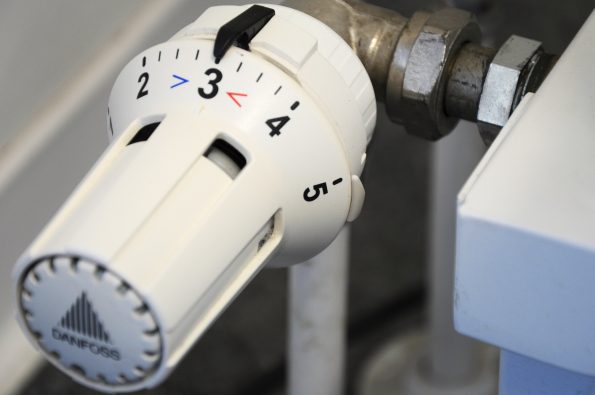One of the best ways to save money on bills is to invest in thermostats and controls. There is a number of different heating controls, therefore you should take your time to decide which one is the best for your individual needs.
Room Thermostats
Room thermostats keep the air temperature around the room at a comfortable level. The lowest comfortable temperature is 18 degrees but about 21 degrees is the optimal figure to keep everyone living in your household happy. This type of heating control works best when allowed an uninterrupted access to free flowing air. Make sure it is not blocked with curtains or furniture
Thermostatic Radiator Valves (TRVs)
These devices are fitted to the radiators. They reduce the amount of water that passes through the radiator. This allows you to decide what temperature you want for each individual room.
Quick Tip: Stop using radiator covers as this will interrupt with your TRV data collection in regards to room temperature.
Cylinder Thermostats
Cylinder thermostat determines to what temperature the water stored in the cylinder is heated to. This prevents the water from unnecessary overheating. Once the temperature is right, the water supply from the boiler is turned off. The recommended temperature setting for this type of a control is between 60 and 65 degrees.
Timing Controls
This allows you to set up time periods for the boiler or central heating to go “on” or “off”. Make sure that the timer on the programmer is correct before setting the program up.
Wait for a cold evening and and keep record of the time your home took to warm up to a comfortable temperature. Then measure the time of your home to go cold form the moment of switching the control off. That way you identify your warm-up time and cool-down time. Set up your timer accordingly to your discoveries.
For more detailed information about types and use of heating controls visit Energy Saving Trust
Smart Heating Controls
Generally speaking, smart heating controls are more advanced ways of saving money through heating controls. After installing an application on your smart phone, you can easily manage your heating system remotely.
Benefits of using Heating Controls at Home
Your perfect set of heating controls should comprise a boiler thermostat, programmer, room thermostat and radiator valves (TRV). You can have immediate advantage of having your home heated without wasting any energy. Other benefits include:
Investing in new heating controls may still not bring you the desired results if you are on a high tariff or a billing plan that isn’t suited to your needs. Check our free online energy comparison tool to see if you can quickly switch to a new deal.







